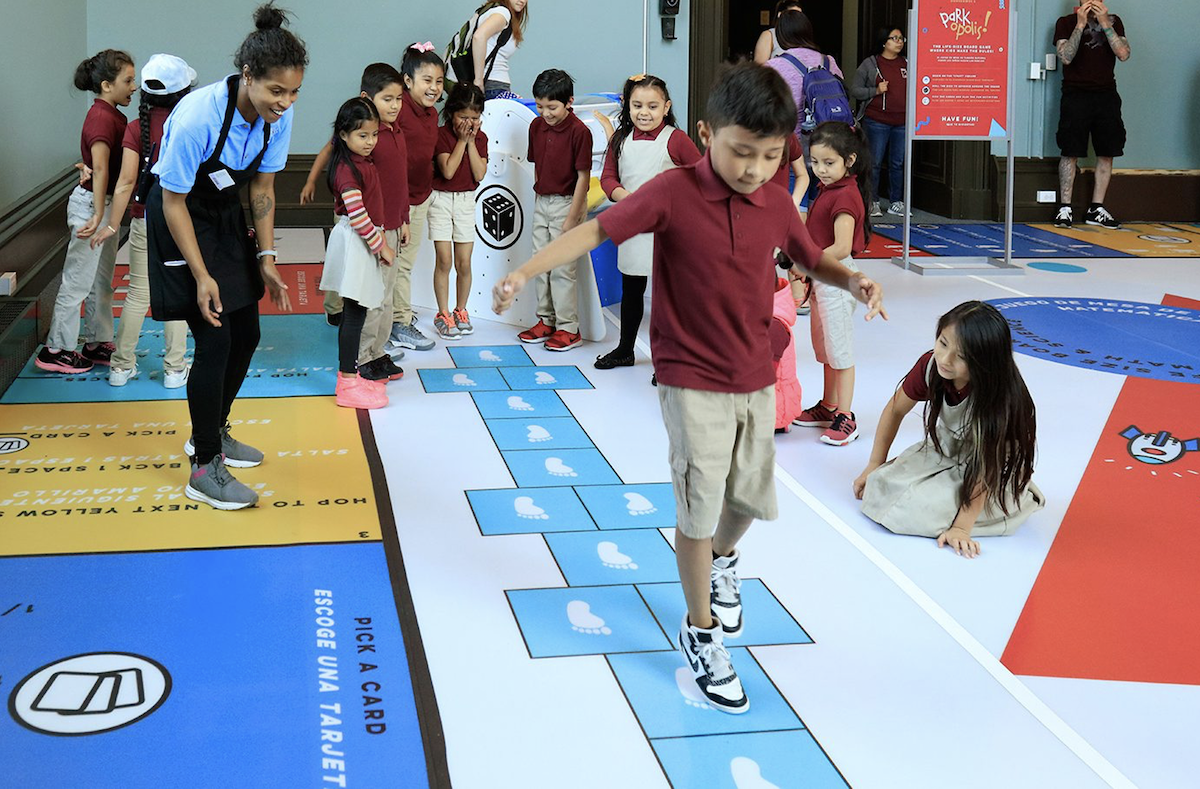Since the COVID-19 pandemic disrupted in-person learning, fears about children’s learning loss remain a primary concern for parents, teachers, and policymakers. These concerns, combined with longstanding issues of inequity regarding children’s access to learning opportunities have sparked widespread discussion about how to reimagine education. While much focus has been on the classroom, children spend 80 percent of their waking time outside of school. Playful Learning Landscapes (PLL) capitalizes on the “other 80 percent” by infusing everyday spaces with engaging learning opportunities that are fun and interactive while reaching children and families most affected by the pandemic.
Playful Learning Landscapes (PLL) uses discoveries from scientific research regarding how people learn best to inform the design of public spaces, including sidewalks, libraries, school yards, parks, and beyond. PLL installations range from games painted on sidewalks, to signage placed in grocery stores, to large physical designs integrated into bus stops. They are designed to foster actively engaged, meaningful, socially interactive, iterative, and joyful experiences for children and families. As a placemaking activity, PLL projects typically involve the community in their design, implementation, and evaluation processes—utilizing a participatory design approach that honors community values, ideas, and input. This ensures that the installations are accessible to all and that historically marginalized populations are centered in ownership of the designs.
In this brief, we present findings from a rigorous analysis, providing evidence of the effectiveness of PLLs to date by synthesizing evaluations across a variety of PLL projects. The analysis examines data from 12 PLL projects in five locations to determine impacts on caregiver-child interaction and caregiver behavior and child behavior individually. The analysis also identifies moderating factors influencing effectiveness, such as the type of PLL and the extent of community involvement. Determining the factors that lead to increased effectiveness can help maximize impact and inform the implementation of PLLs. Thus, we close with a discussion of what this analysis tells us about how local leaders can promote PLL uptake and integration in their communities and how they can create beautiful playful learning environments that build more child-friendly cities.





